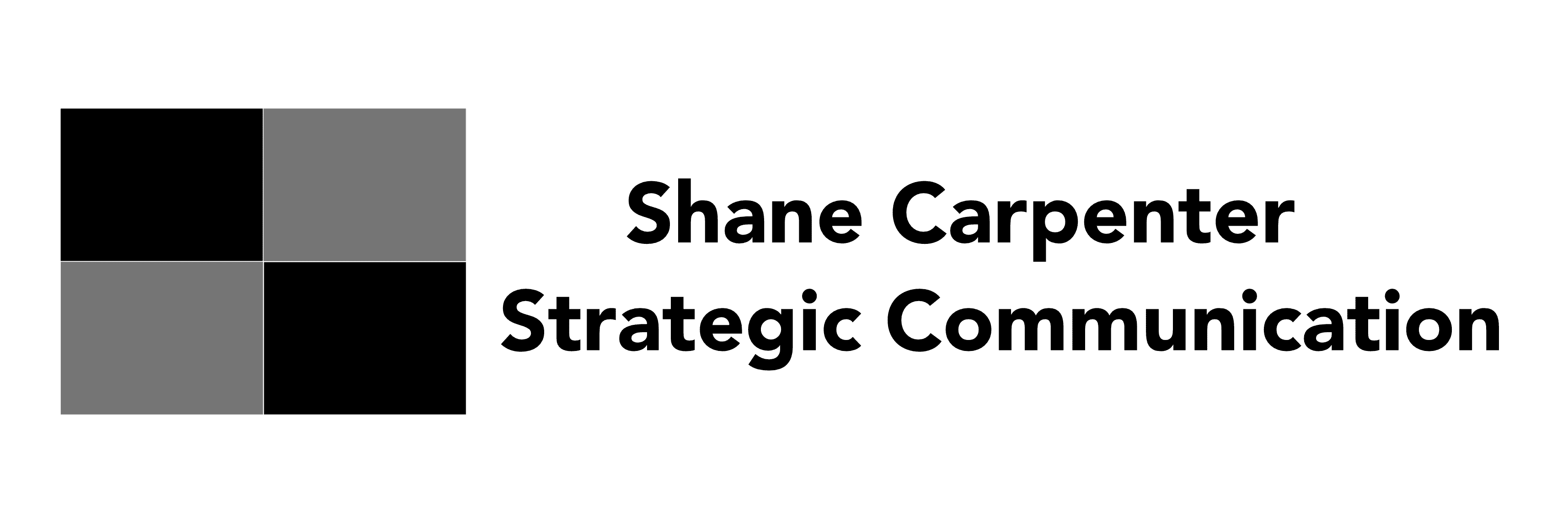Sometimes a change has so little impact that it’s insignificant while other times it can completely change the world

The changes forced on us over the past year have been hard. It’s been difficult to adjust to a new reality but is the change we’ve seen something bigger?
Despite the fact that many thought leaders have proclaimed that there have been many big changes that will continue to impact us post-covid, I’m not so sure.
It’s easy to prognosticate. It’s much more challenging to recognize, understand, and adjust to change as it is already unfolding around you.
Ask companies like Blockbuster, Borders, Circuit City, Fry’s, Toys R Us, Nokia, Shopko, or Blackberry (formerly Research In Motion) to name just a few.
Better yet ask anybody in the music industry who knew digital was coming but didn’t do anything until Napster showed up and turned the industry upside down. While the industry survived, it’s far from the golden years it previously experienced.
People talk about change but rarely do I hear anybody talk about what Intel co-founder, Andy Grove, coined as a strategic inflection point.
All the companies I mentioned above went through a strategic inflection point. Some survived but most went out of business.
As Apple co-founder and later CEO, Steve Jobs said, “You must learn about strategic inflection points, because sooner or later you are going to live through one.”
My guess is none of these companies had ever heard of a strategic inflection point. I’m also willing to guess that you haven’t either.
Ignorance can be bliss but then again what you don’t know might also kill you.
It’s Hard to See in a Blizzard
A year ago people were talking about the “new” normal. It quickly became an overused term.
What was really being referred to was the fact that a change had taken place.
It wasn’t something anybody saw coming. A more accurate description is that it felt like being Wile E. Coyote having an anvil dropped on his head.
I was paying attention to things like machine learning and all the talk about AI, the new tools that I should consider as part of my marketing stack, and the continued shift to digital and how it was changing the way people buy.
I also had some concerns about the economy, the stability of our political system and how it would impact the way we do business.
Outside of this, I was worried about all the normal business things that I encounter on an everyday basis: sales, marketing, building the business, competitors, etc.
All this in itself provided plenty to think about and stress over.
Nowhere in my list of concerns was: pandemic.
So much of the adjustments we’ve had to make have been declared as part of the new normal going forward. The problem of living in a pandemic is that it has distorted the world and our viewpoints.
The way you would drive your car in blizzard is different than how you would drive if it’s 80 degrees with clear skies.
While it feels like we can see a light at the end of the tunnel, covid is still impacting the way we live. You can see the sun trying to poke through the clouds but it’s still snowing and the roads are still ice.
The problem is that many people are taking the change and the adjustments that have been made because of the blizzard and are acting like nothing will change again when it’s 80 degrees and clear skies.
The question that I’ve been asking myself over and over again is: Has covid created the sort of change that completely changes any aspect of the way business is conducted?
It’s hard to tell because it’s still hard to see through the blizzard.
Only The Paranoid Survive
I don’t know about you, but I have many things to consider when running my business.
Some days it can be a little overwhelming. Every once in a while when I’m feeling anxious I think of Andy Grove.
When I worked at Intel, Grove was our chairman. The company spoke of him as one of the three founders of the company.
He started as the director of engineering when the company launched in 1968 and helped set up the manufacturing operations. In 1979 he would become its President. By 1987 he was the CEO and in 1997 he would add the role of Chairman. A health issue forced him to step down from his CEO role in 1998 but he would continue as Intel’s Chairman until 2004.
Of the three Intel founders, Grove was the only one was still part of Intel when I was there. Robert Noyce hadn’t even been with the company when he passed away in 1990 and Gordon Moore had essentially retired after relinquishing his position as Chairman in 1997.
I tell you this because the Intel I worked at was still very much the product of Andy Grove and his leadership.
Grove was a legendary figure at Intel but it went well beyond this as evidenced by Time naming him the 1997 Man of the Year.
During his time at Intel, he was credited with creating a culture that helped innovation flourish while also being mindful and preparing for change.
In his words:
“I’m often credited with the motto, “Only the paranoid survive.” I have no idea when I first said this, but the fact remains that, when it comes to business, I believe in the value of paranoia. Business success contains the seeds of its own destruction. The more successful you are, the more people want a chunk of your business and then another chunk and then another until there is nothing left. I believe that the prime responsibility of a manager is to guard constantly against other people’s attacks and to inculcate this guardian attitude in the people under his or her management.”
Excerpt From: Andrew S. Grove. “Only the Paranoid Survive: How to Exploit the Crisis Points That Challenge Every Company and Career.”
Grove had an outsized influence on the technology sector but this article isn’t about him. It’s about the idea that sometimes there is a change that comes along that changes the way do business.
This idea is called a strategic inflection point.
What is a Strategic Inflection Point?
I’ve spent a lot of time over the last couple of years thinking about what might be a strategic inflection point.
It’s never easy but it can become even harder when I have to cut through the layers of hype and bias to get to something which resembles the truth.
Grove introduces the concept of an inflection by talking about a 10x force. It’s a change in how an element of your business is conducted that becomes much bigger than you’re used to. This force is something that your business is doing that could be done in a different way. This is what forces an inflection point.
Let me give you a couple of examples.
Automation is an element that completely changed the way that manufacturing is done. The change was that fewer people were needed because their jobs were replaced by robots. Over the long run, automation improved efficiency and cut costs. One of the most obvious examples of this is in the automotive industry.
Imagine manufacturing cars as automation played out. It had a huge impact on how work was done. It also wasn’t implemented overnight. It happened over a period of time and it was a 10x force.
If your competitors were embracing automation there was heavy pressure for you to do it as well. For many companies, it would have been an adapt or risk going out of business type of situation.
When there is a 10x force in an aspect of your business it can be like navigating a ship through a hurricane. You’re reacting to what is going on around just trying to stay afloat. It can cause confusion and the feeling of chaos.
Eventually, a new equilibrium is going to be created and it’s going to be different than the way you did business before. If you embrace the new equilibrium your company can ascend to new heights. If you don’t, the business declines.
That point where the business can ascend or descend is the inflection point. It also represents that there needs to be a change in strategy which means you are at a strategic inflection point.
The choice the car manufacturers made to either embrace automation or reject it was their strategic inflection point.
Here is a different example from Grove’s book.
In the 1980s, Intel was producing memory chips but Japanese companies were also producing them and had begun producing chips that were superior to those of American companies.
They had access to more capital which they invested in research and development and modern factories that allowed higher production which lowered the cost of memory.
It came to the point where Intel was losing money by selling memory chips.
Grove was the president of the company and he talked about a meeting he had with then CEO Gordon Moore in which they were trying to find a way forward.
The question was how to compete with the Japanese companies and the answer was they wouldn’t. Grove and Moore agreed on a strategic change that transformed Intel. They chose to get out of making memory and go all-in on microprocessors, a product they already produced.
This was Intel’s strategic inflection point. It needed to make a decision to make a change or potentially risk going out of business by staying the course.
Grove tells the story over 20 pages including how hard it was to get people on board with their decision but the result in this change was a boon for Intel.
Had it continued the course with memory, Intel likely would have gone out of business. Instead, the choice that was made would lead it to be the largest semiconductor company in the world.
Is The Pandemic a Strategic Inflection Point?
The pandemic isn’t a strategic inflection point but its presence may have created a strategic inflection point for some industries.
Sit-down restaurants that weren’t able to reposition themselves for delivery or pick-up have gone out of business.
Grocery stores have implemented online shopping that allow you to place an order and then pick it up.
Many companies were forced to close the office and allow people to work from home.
This move created opportunities for companies like Zoom and others as people needed tools to help them work from home.
The PC industry saw computer sales spike.
Having digital presence became not just an option but a necessity.
These were all reactions to the pandemic but will they last after the pandemic ends?
How will Zoom be impacted when people are back in the office and can travel? Will PC sales go back down? Will online grocery sales go up, down, or flatten? Will digital sales continue their ascent or will they drop once people have the option to shop in stores.
Some people will tell you that the new behaviors which have been created are the new normal and everything will continue the way it’s been going. Others might say that behaviors will shift again after the pandemic.
I feel we won’t know the answer until after we have exited the pandemic. Anything else is really just speculation.
Ultimately, consumers will dictate whether these become strategic inflection points or not but I advise you to pay close attention to them.
Strategic Inflection Points and Marketing
A strategic inflection can impact an entire industry, your company, and your employees. This includes your marketing. There could be a strategic inflection point that only impacts the way you do marketing and public relations (PR).
As an industry we’ve endured much change over the last 10-15 years. I’ve mentioned this in countless articles that I’ve written.
We’ve seen more change in the last decade than the industry saw in the previous 40 years and I feel it’s accelerating.
I think embracing digital has been a strategic inflection point. I really don’t know how one can be in our industry and have success in ignoring it.
I talk about the PESO model quite a bit and its creator, Gini Dietrich, makes the argument that PR pros have to embrace the PESO model or risk being assimilated by marketing. Is it a strategic inflection point? I think based on her position, she would say that it is for those in the PR industry.
She makes a great argument that I haven’t seen anybody in the PR industry successfully counter.
There is another example that we are seeing right now but it’s not clear how it’s going to play out.
I’m talking about AI. More accurately, I’m referencing machine learning.
With machine learning, you add your data into a machine learning process and it will identify elements and trends. And yes, I do understand there’s more to it than this but my point is a machine can process data much more quickly than you or I can.
Machine learning reminds me of the automation that manufacturing has gone through and it could have a huge impact in many areas including data analysis and writing.
It looks like it could be a strategic inflection point but it’s early and unclear how it will play out. I don’t believe at this point that AI will understand context because even we as humans struggle with it at times.
However PESO and machine learning are both areas for you as marketers and PR people to keep tabs on.
There are other things as well such community and audio which could create inflection points.
Community isn’t new and I think it feels more like a tactic than a strategic shift but it’s something to be aware of.
Audio took off thanks to Clubhouse and has inspired a host of imitators on Facebook, Twitter, and LinkedIn but it feels more like a reaction to what we have been going through than a permanent shift. However, the investment in it by such big companies makes it something to watch.
A Final Piece of Advice on Strategic Inflection Points
There are many other areas to keep an eye on but there are three that you should always monitor.
Pay close to attention to not only what your competitors are doing but how they are doing it. Either could spark an inflection point.
Don’t underestimate yourself either. You could be the one that creates an inflection point. Sometimes you may not even notice it because it’s just what you do but be cognitive of how you do business.
It doesn’t have to change the industry but it could be a major change in the way that you operate. I experienced a strategic inflection point during the pandemic that changed the way I chose to do business and the funny thing was I was already going in that direction. I just needed to recognize and embrace it.
Are you in a similar situation?
Your customers can also be the cause of an inflection point. Pay close attention to what they are saying and doing. This means checking in with your customer service and sales teams and anybody else who has the ear of your customer.
And finally remember, only the paranoid survive.
Image by Sarah Richter from Pixabay
- Is Your Marketing Connected? - March 6, 2025
- Stop Planning and Start Strategizing - October 24, 2024
- The Importance of Creating a Connection With Your Marketing - June 6, 2024

